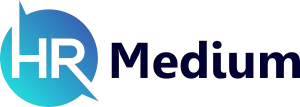Continuous improvement and open communication reign supreme in an ever-evolving business landscape. A feedback-first culture fosters growth, boosts morale, and aligns employee performance with organizational goals. Modern HR technology plays a crucial role in cultivating this culture by making feedback more accessible, timely, and actionable.
Also Read: 5 Ways How IT Influences Human Resource Management
Learn how to create a feedback-first culture in your organization with HR technology.
The right tools can make feedback timely, meaningful, and central to everyday work life.
Real-Time Feedback with HR Platforms
Traditional annual reviews are quickly becoming obsolete. Employees today crave regular, real-time feedback that helps them improve continuously. HR tech tools such as performance management systems and employee engagement platforms allow managers and peers to give instant feedback. These tools support a feedback-first culture by enabling a steady stream of communication, rather than waiting for formal reviews.
Encouraging Peer-to-Peer Recognition
A feedback-first culture thrives when everyone—not just managers—participates in the feedback process. HR tech facilitates peer-to-peer recognition through platforms like Kudos, Bonusly, or internal social recognition tools. These platforms empower employees to acknowledge each other’s efforts, reinforcing positive behaviors and enhancing team morale.
Data-Driven Insights for Managers
HR technology aggregates data from multiple feedback sources to give managers a 360-degree view of employee performance and engagement. This data allows for more informed decisions and tailored coaching strategies. In a feedback-first culture, data-driven insights help leaders address issues proactively, recognize top performers, and personalize development plans.
Making Feedback a Habit with Automation
One of the biggest challenges in creating a feedback-first culture is consistency. HR tech solves this by automating feedback cycles—prompting managers and teams to check in regularly. Automated nudges, feedback templates, and pulse surveys ensure that feedback becomes a regular and expected part of the workday, rather than an afterthought.
Enabling Psychological Safety
For a feedback-first culture to take root, employees must feel safe to speak up and share honestly. HR tech helps create psychological safety by offering anonymous feedback options, sentiment analysis tools, and inclusive engagement platforms. This encourages more honest communication and fosters a sense of trust and transparency across the organization.
Supporting Remote and Hybrid Teams
In remote or hybrid work environments, organic feedback is harder to come by. HR platforms bridge this gap by keeping everyone connected and engaged, no matter where they work. With integrated video feedback, chat tools, and mobile apps, a feedback-first culture becomes scalable across geographies and time zones.
Conclusion
Implementing a feedback-first culture isn’t just a trend—it’s a strategic advantage. With the help of HR tech, organizations can foster continuous growth, enhance engagement, and drive better business outcomes.

